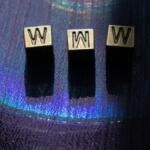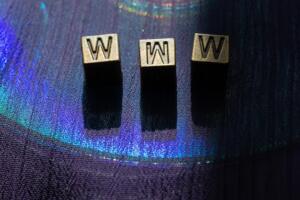Understanding the Risks of Flat-Calling in MTTS
In the world of multi-table tournaments (MTTs), many players often overlook the nuances of their preflop strategies. While it might seem like the big mistakes are the ones that cost players the most money, it’s often the smaller, more subtle errors that accumulate over time, leading to significant profit loss. One of the most common pitfalls is flat-calling too wide and in inappropriate situations. This article aims to provide a structured approach to developing effective flat-calling strategies that are grounded in solid theory and profit potential.
At a Glance
- Understanding the importance of flat-calling strategy.
- Identifying common mistakes in preflop play.
- Analyzing position and its impact on equity realization.
- Learning the difference between frequency and pure mistakes.
- Recognizing the role of domination in hand selection.
Flatting Wide: The Mistake That’s Too Easy to Make
Let’s begin with a scenario to illustrate the concept of flat-calling. Imagine you’re playing with 50 big blinds effective stacks. The player in the under-the-gun (UTG) position opens the betting, and it folds to you in the Hijack position. This situation provides an excellent opportunity to analyze your options.
Consider the following question: without consulting a chart, identify the weakest hand in each category that is a full-frequency voluntarily put money in the pot (VPIP) from the Hijack against UTG’s open-raise strategy:
Q1) Pocket Pairs: 22, 33, 44, 55, 66
Q2) Suited Connectors: 54s, 65s, 76s, 87s, None of the above
Q3) Suited One-Gappers: 75s, 86s, 97s, T8s, J9s
Q4) Suited Ax: A2s, A3s, A4s, A5s
Q5) Offsuit Broadways: QTo, QJo, KJo, KQo, None of the above
Once you’ve considered your answers, you can check against the provided chart to see how you did.
Evaluating Your Answers
Answer Key:
Q1) Pocket Pairs: 55 is the bottom of the full-frequency VPIPs from the Hijack.
Q2) Suited Connectors: None of the above. The weakest full-frequency suited connector is T9s.
Q3) Suited One-Gappers: T8s is the weakest. 97s is a pure fold.
Q4) Suited Ax: A3s is the bottom of the range; A2s is a pure fold.
Q5) Offsuit Broadways: KJo is a 95% frequency fold, and QJo folds pure.
How did you fare? If you missed some answers, don’t be discouraged. Understanding the types of mistakes you can make is crucial for your growth as a player.
Frequency vs. Pure Mistakes
In poker, mistakes can be categorized into two types: frequency mistakes and pure mistakes. Frequency mistakes occur when you mix your calls and folds on the fringe of your range. For instance, if you over-call with suited connectors or pocket pairs, it can be a frequency mistake, but it’s not the end of the world.
Pure mistakes, however, are far more damaging. These are actions that should never be taken, such as calling with hands that have zero frequency in a particular situation. For example, hands like ATo or QJo lose expected value (EV) when flat-called against a strong opening range. Understanding the difference between these two types of errors is vital for improving your game.
The Impact of Preflop Frequency Mistakes
Getting preflop frequencies correct is crucial, as it sets the tone for the remainder of the hand. If you flat-call suited connectors too frequently, it may not allow your opponent to exploit you actively, but it can still have passive effects. Flatting with weak hands can shift the dynamics of your range, affecting your overall performance on various board textures.
For instance, if you’re too liberal with your calls preflop, stronger hands in your opponent’s range gain slight advantages in EV. This is why it’s essential to treat Game Theory Optimal (GTO) solutions as guidelines rather than absolute truths. If your opponents are making preflop mistakes, your postflop strategies may need to adapt accordingly.
Why We Flat-Call
Flat-calling preflop can sometimes seem counterintuitive, as it implies a certain level of weakness. By not raising, you might be perceived as having a weaker range. However, flat-calling can still be profitable and is often preferred over folding or 3-betting in certain situations. The key is to ensure that your flat-calls are made with hands that can capitalize on seeing the flop.
For instance, if you only adopt a fold-or-3-bet strategy, you may find yourself in a position where some hands become unplayable. This could lead to unnecessary costs to see a flop or risk your equity being denied by an opponent’s 4-bet.
Position and Equity Realization
Position plays a critical role in determining how wide you can flat-call. For example, if you’re in the Hijack, your flatting range is typically tighter compared to when you’re on the Button. The Button can afford to flat-call with a wider range due to having the last action postflop, allowing for better equity realization.
In contrast, the Hijack position must be cautious, as they are sandwiched between the Cutoff and the Button. This positioning can lead to reduced equity realization, making it essential to play tighter to maintain profitability in multi-way pots.
Understanding Domination in Hand Selection
One common issue that arises in preflop play is the concept of domination. In many cases, the UTG player’s range is heavily weighted towards strong Ax hands and high-ranking Broadways. When you choose to flat-call with weaker offsuit hands, you risk being dominated, leading to unfavorable situations postflop.
For example, even from the Button, you’ll notice that offsuit Broadways are not fully present in your flat-calling range. This is a deliberate strategy to avoid running into situations where you’re dominated by stronger hands. Understanding this dynamic is critical for making informed decisions about your hand selection.
Reader Q&A
Q1: What should I consider when deciding whether to flat-call?
Consider your position, the strength of your hand, and the tendencies of your opponents. Flat-calling should be based on whether you believe seeing the flop will be profitable.
Q2: How does position affect my flat-calling range?
Position significantly impacts your range. The later your position, the wider your flat-calling range can be, as you have more information on your opponents’ actions.
Q3: What are the consequences of making pure mistakes?
Pure mistakes can lead to significant EV loss and can be detrimental to your overall game. Avoiding these mistakes is crucial for long-term success.











